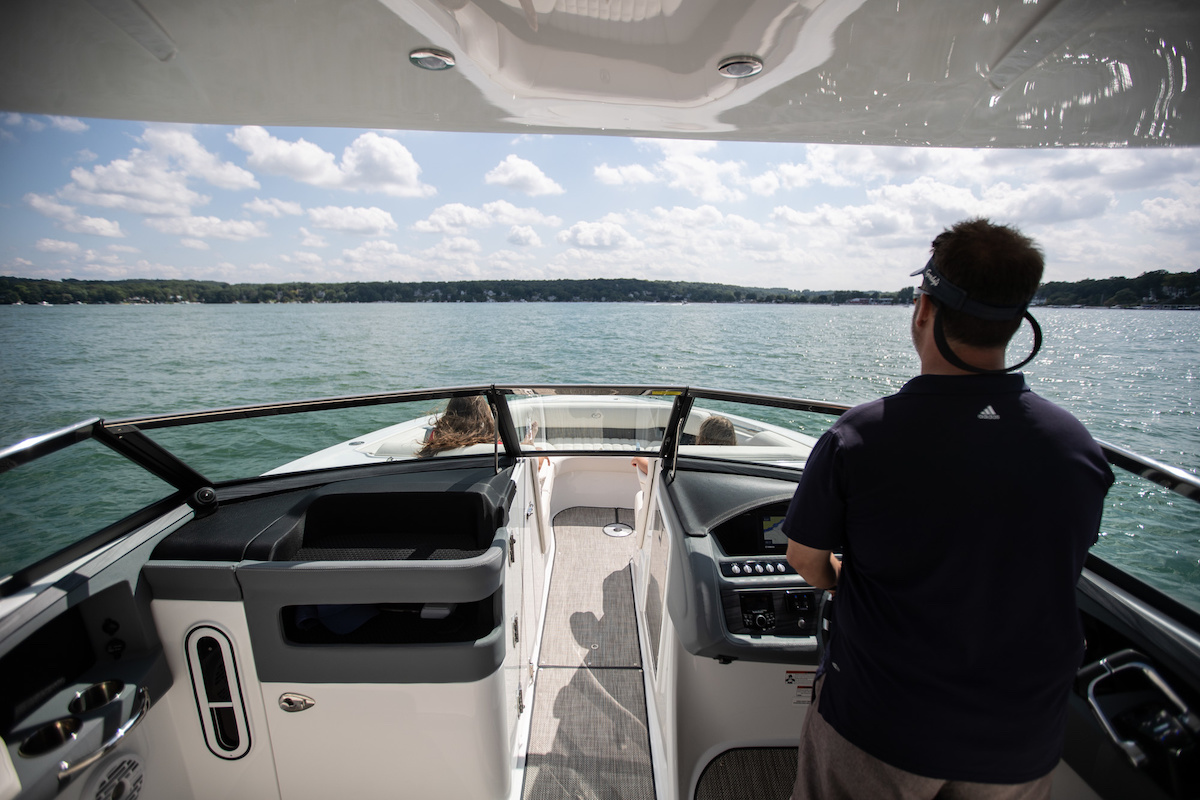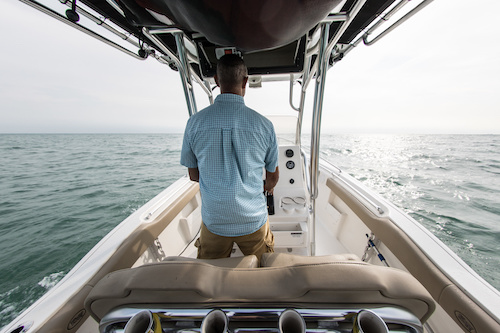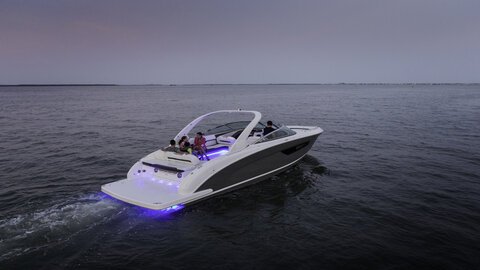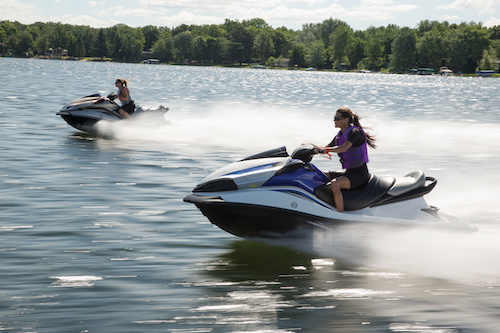Avoiding boat collisions on the water and minimizing the risk of a boating accident is the first priority of any skipper. As the vessel’s captain, you’re responsible for the safety of your crew, any surrounding vessels and the environment where you boat. With that responsibility comes a need for a basic level of knowledge and good situational awareness.
To help build that understanding, here are a few tips to keep you and other vessels safe.
What Should You Do to Avoid Colliding with Another Boat?
- Always maintain a watch.
- Understand marine navigation rules.
- Stay clear of shipping lanes.
- Understand the implications of speed.
- Remain visible at all times.
- Keep your VHF radio on underway.
- Only boat when well-rested and sober.
- Expect the unexpected.
- Maintain a speed appropriate to conditions.
- Boat smart and use common sense.
1. Always Maintain a Watch
This means you or someone aboard is always a lookout, watching for other boats, navigation aids, people in the water or upcoming hazards.
Standing a watch is especially important in times of reduced visibility such as in fog or at night. Keep binoculars at hand.
2. Understand Marine Navigation Rules
The best boat collision deterrent is knowing the Rules of the Road and which vessel has the right of way when two boats meet. Part of these rules also includes being able to recognize aids to navigation such as buoys and channel markers and understanding what lights are being exhibited by another vessel with oncoming, crossing or anchored traffic at night.
You’ll also need to know the basics of sound signals:
- One short blast means a boat is leaving you to port.
- Two blasts means they’re leaving you to starboard.
- Five blasts means danger and you’d better figure out quickly if it was meant for you.
3. Stay Clear of Shipping Lanes
Shipping lanes are routes used for large vessels ferrying cargo to and from port. These lanes are usually marked on charts as magenta swaths. They are typically five miles wide and have up- and down-stream traffic lanes.
Large ships travel at high speeds and five miles can take a sailboat an hour to cross so it’s imperative to stay out of these lanes and cross them at a 90-degree angle, which represents the shortest time spent in the danger zone. Never fish, anchor, heave to or stop for any reason in shipping lanes.
4. Understand the Implications of Speed
Ships travel on average at 30 knots, so even if you’re not in the shipping lanes, understand that a cargo vessel or cruise ship can move from the horizon to your location in 15 minutes.
- Don’t try to outrun a crossing vessel.
- If unsure whether or not you can make it across before they reach you, turn slightly and take their stern (go behind them)—it’s not only safer, it’s also more polite.
5. Remain Visible at All Times
Small pleasure crafts are hard to see, especially from the deck of a ship and especially in fog or at night.
- Turn on running lights from dusk to dawn and display the proper light schemes if anchored.
- Carry a radar reflector so your return is picked up on another vessel’s radar and consider adding AIS (Automatic Identification System) capability to your own radar.
- Per the US Coast Guard, use a strobe light only as a distress signal.
6. Keep Your VHF Radio on While Underway
The VHF radio is to be kept on when you’re moving.
- Keep it tuned to the distress and hailing frequency on Channel 16 in case another vessel is calling.
- Remember, they don’t know who you are so you may be called as “fishing vessel off my port bow”.
- Always switch to another working frequency once you’ve established contact and want to continue communications.
7. Only Boat When Well-Rested and Sober
Fatigue leads to faulty decision making so just as with driving a car, don’t operate a boat when tired or sleepy. Keep in mind that boating under the influence (BIU) is just as dangerous and serious as a DIU.
8. Expect the Unexpected
When boating in the early morning or late afternoon when there’s glare on the water from a low-lying sun, move slowly and keep an extra vigilant lookout.
Remember that on lakes, rivers and coastal areas, debris increases after a storm or significant rainfall so you may get the unexpected log or bucket in your way.
9. Maintain a Speed Appropriate to Conditions
- Slow down in no wake zones and in limited visibility.
- Don’t speed around roped off swimming zones as you don’t know if there are people outside the designated area.
- If there is traffic or congestion around piers where large vessels are docking or pulling out, keep clear as their prop wash may create turbulence that will impact the control of your vessel.
10. Boat Smart and Use Common Sense
Fun boating and safe boating go hand-in-hand. Here's a few more factors to keep in mind to ensure a great day on the water for you and other boaters:
- Don’t engage in towing sports in navigation channels or secluded anchorages where people may be swimming.
- Look in all directions before making a turn and that includes behind you.
- Don’t assume the other guy knows what he’s doing and if in doubt, keep clear.
Avoiding boat collisions is up to everyone so never assume someone else will take evasive measures even if you have the right of way. Avoid boating accidents—boat smart.
10 Tips to #RecreateResponsibly While Boating & Fishing
You May Also Like:



